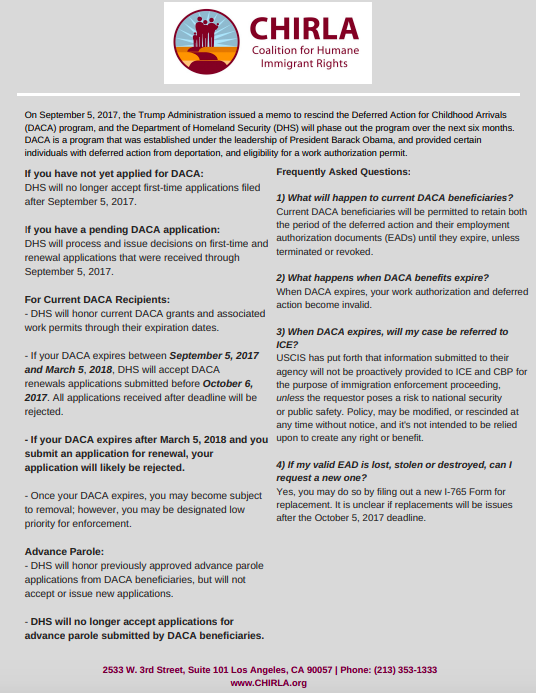There has been a lot of talk about DACA and the Dreamers on the news lately. This topic hits close to home because I am an immigrant. I was fortunate enough to have been neutralized as a child. I understand how difficult the path to neutralization is and the cost that comes with it. I read and hear people talk about illegal immigration with no real understanding of what it means and why people do it. So if you find yourself asking “who are the Dreamers?” and “why should I care,” please read on.
The Dreamers are children of immigrants who were brought into the United States at a young age. They speak mainly English, identify themselves as American, and have no memory or connection with the country they were born in. A lot of Dreamers say they didn’t know they were undocumented immigrants until they were teenagers. A lot of them found out via being unable to obtain a driver’s license or filing for financial aid.
The Deferred Action for Childhood Arrivals, or DACA, is a program that was introduced in 2012 by President Barack Obama as a stopgap measure that would shield from deportation people who were brought into the United States as children. The status is renewable, lasting two years at a time. The program does not provide a pathway to citizenship.
DACA recipients, often called Dreamers (refers to a similar legislation called the Dream Act in 2001, would have given beneficiaries a path to citizenship), are between the ages of 16 and 35. The majority of them come from Mexico, Central and South America, Asia, and the Caribbean. There were roughly 800,000 statuses issues.
To qualify for the program, recipients must be enrolled in high school or already have a diploma or G.E.D. Anyone with a serious Criminal history is not eligible. The fee to request DACA is $495 every two years.
The program offers a range of benefits such as:
- Permission to remain in the country
- Work permits, through which health insurance can be obtained from employers
- In some states, driver’s licenses
- Access to in-state tuition, state-funded grants, and loans in some states
- Depending on the state, subsidized health care
The program was introduced after Congress failed to negotiate over how to deal with the Dreamers. Although the Dream Act never passed, it gained widespread popularity among the American electorate, and at times in both houses of Congress.
President Trump ended the program in September 2017 after nine conservative state attorneys threatened to sue over the policy stating that it was an overreach of presidential power. The program was supposed to end on March 5, 2018. President Trump is now calling on Congress to come up with a replacement within months. President Trump proposed a path to citizenship for DACA beneficiaries in exchange for tough concessions, including funding for a new border wall and family-based migration policies.
DACA recipients help our economy. It is estimated that if the House and Senate decide to replace DACA with a path to citizenship, they could contribute nearly $505 million in state and local taxes. If all DACA recipients are deported, it’s estimated that the U.S. would lose $60 billion in federal taxes and $460.3 billion in economic growth over ten years.
The majority of Americans support protecting DACA recipients. 87% of Americans want them to be able to legally remain in the United States.
Hopefully, you have a new understanding of what DACA is and why we should continue to support the Dreamers.
For more information about DACA and the Dreamers, please see the links below. I have also included a link to CHIRLA, which offers information on how you can help Dreamers and information for Dreamers. One day I hope to be an immigrant rights activist and if today I’m able to educate at least 1 person, then I have done my job.

https://www.nytimes.com/2018/01/23/us/daca-dreamers-shutdown.html
https://www.theguardian.com/us-news/2017/sep/04/donald-trump-what-is-daca-dreamers
https://www.cosmopolitan.com/politics/a15888182/daca-dreamers-economic-political-benefits
http://www.chirla.org/content/what-you-can-do-now-help-daca-recipients-and-fight-dream-act
https://www.cnn.com/2018/03/02/politics/daca-deadline-explainer/index.html